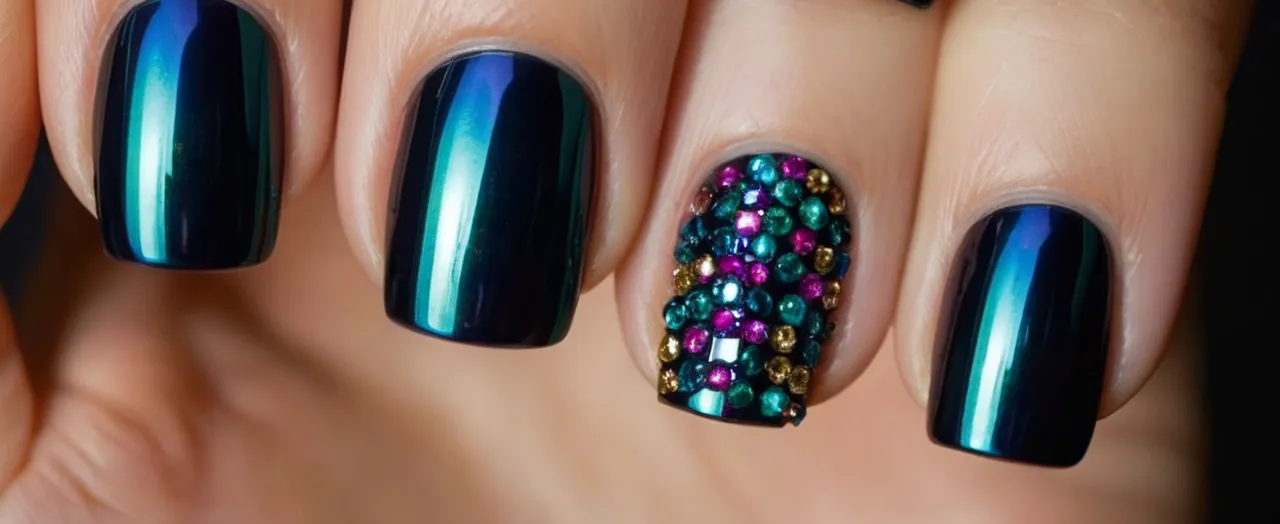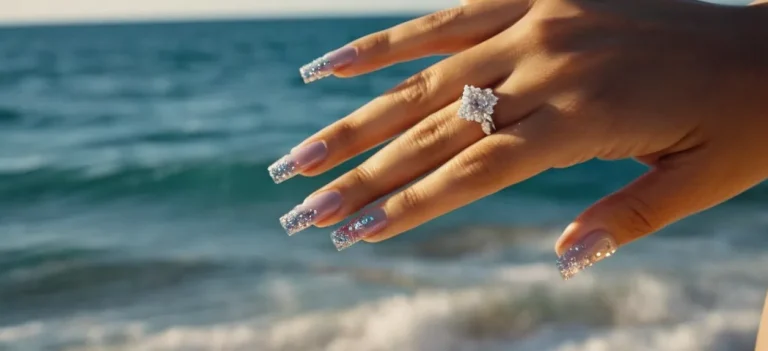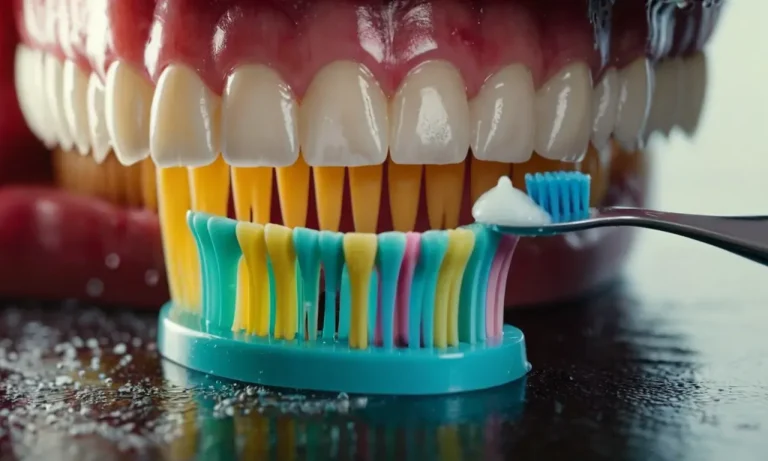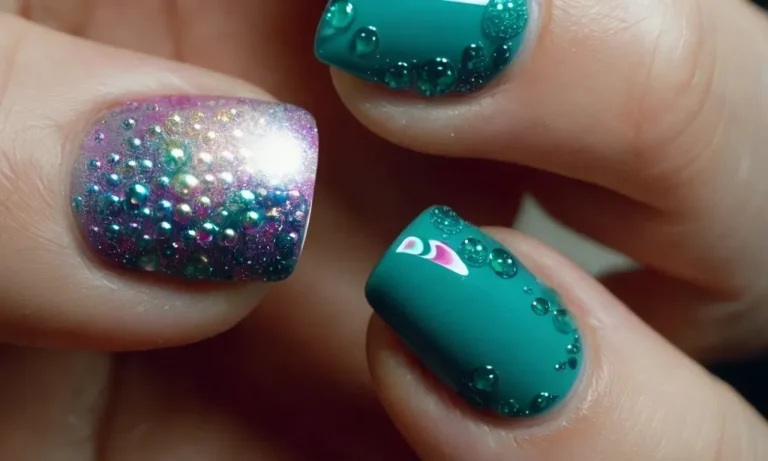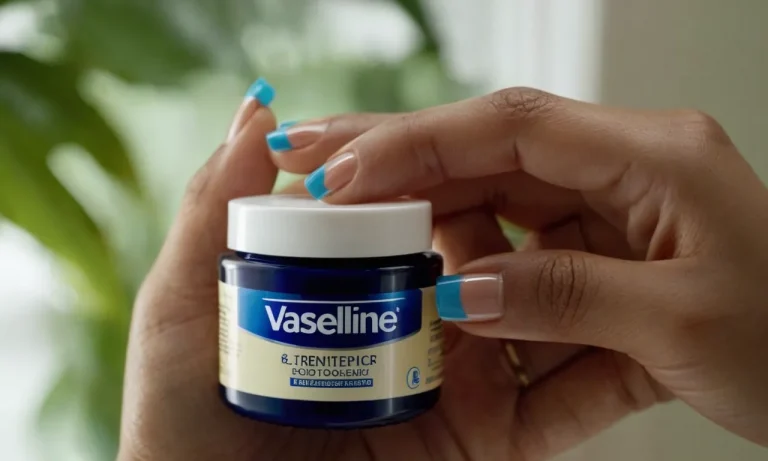How To Get Fake Nails: A Complete Guide
Fake nails are a great way to experiment with fun nail art designs or simply give your natural nails a break. But getting fake nails for the first time can be intimidating. In this comprehensive guide, you’ll learn everything you need to know about selecting, applying, and caring for fake nails.
If you’re short on time, here’s the quick answer to getting fake nails: Choose either acrylics, gel polish, press-ons, or stick-ons based on your needs. Then file and buff your natural nails to prep them before applying your chosen fake nails with adhesive.
Maintain your faux nails by keeping them dry, avoiding picking at them, and getting fill-ins as needed.
Choosing Between Acrylics, Gel Polish, Press-Ons, and Stick-Ons
Key Differences
When deciding between the various types of artificial nails available, there are some notable differences to consider:
- Acrylic nails are applied using a liquid and powder polymer that hardens into a durable extension. They require professional application and removal.
- Gel polish is a long-lasting colored polish cured under UV or LED light. It can be applied over your natural nails or any type of artificial tips.
- Press-on nails are pre-made nail extensions that glue onto your own nails temporarily with adhesive tabs or glue.
- Stick-on nails are very thin nail coverings that stick to your nail plate without glue or tabs.
Acrylic Nails Pros and Cons
Acrylic nails have many fabulous benefits but also some downsides:
| Pros | Cons |
| – Very durable and long-lasting. | – Can weaken the natural nail over time. |
| – Enable intricate nail art and designs. | – Require professional application/removal. |
| – Available in every shape, length and color. | – Can be uncomfortably heavy. |
According to nailartists.com, over 90% of salon clients opt for acrylics over other nail options.
Gel Polish Nails Pros and Cons
Gel manicures have exploded in popularity due to these positives and negatives:
| Pros | Cons |
| – Chip-resistant for 7-14 days. | – Can cause nail thinning/peeling when removed improperly. |
| – Dries quickly with no smudging. | – Need reapplication every 2-3 weeks. |
| – Enhances natural nail’s strength. | – UV lights may cause skin damage. |
According to NSI’s 2022 survey, 63% of nail salon clients now prefer gel manicures over regular polish.
Press-On Nails Pros and Cons
Pre-made press-on extensions provide a quick fix but aren’t very durable:
| Pros | Cons |
| – Easy do-it-yourself application. | – Only last 1-5 days with glue tabs. |
| – Remove quickly without damage. | – Can pop off unexpectedly. |
| – Fun way to temporarily change your look. | – Limited size options. |
While less popular than acrylics or gels, press-ons make up 23% of the nail extension market according to Allied Market Research.
Stick-On Nails Pros and Cons
Stick-on wraps offer hassle-free application but have some flaws as well:
| Pros | Cons |
| – Thin and flexible for comfortable wear. | – Only last about 1-4 days. |
| – No glue or damage to natural nails. | – Very limited design and color choices. |
| – DIY application in minutes. | – Can lift at the edges quickly. |
While not as popular as other options, stick-on wraps still amount to a $50 million niche industry per Research and Markets data.
Prepping Your Natural Nails
Removing Old Nail Polish
Before applying fake nails, it’s crucial to start with a clean slate by removing any old nail polish from your natural nails. Use a nail polish remover like acetone to break down the nail lacquer and wipe it away with a cotton ball or pad. Be sure to remove all traces of color from your nails.
You want the surface completely clean so the glue adheres properly when applying fake nails. Removing the polish thoroughly will help the manicure last longer.
Filing and Shaping Your Nails
Once your natural nails are cleaned, you’ll want to shape and file them. Use a nail file to gently smooth the edges of each nail so they have a uniform length and shape. Round the tips just slightly to prevent snagging and breakage. Don’t take off too much length if your nails are already short.
For the best results, file each nail so the edges are thin and even. The goal is to remove any roughness so your natural nails have a smooth surface for gluing on the fake tips. Filing into a uniform shape allows the fake nails to adhere evenly across each nail.
Using Cuticle Remover
Before buffing the nails, it’s important to care for the cuticles. Push back the skin around each nail gently with an orangewood stick. Then apply cuticle remover cream and let it sit for about a minute to soften the cuticles.
Gently push back the cuticles again with a towel and wipe away any excess cream. Trimming off any hangnails with nail clippers. This removes dead skin so that the fake nails can lie flush against the natural nail. Well-groomed cuticles help prevent lifting and enhance the manicure.
Buffing Your Nail Surface
The final step is to buff the surface of your natural nails to create texture. Use a three-way nail buffer starting with the coarser side, then switching to smoother sides for a polished finish. Buffing each nail’s surface helps the glue stick better by creating microscopic ridges and grooves.
Apply even pressure as you buff in one direction across the entire nail. Avoid over-buffing, which can damage and thin out the nails. The goal is to rough up the surface just enough for proper adhesion. Properly buffed nails are ready for gluing on fake nail tips or acrylics.
Applying Your Fake Nails
Acrylic and Gel Polish Application
Acrylic and gel polish are popular options for getting long-lasting, natural-looking fake nails. Here’s a step-by-step guide for applying them properly:
- Prep your natural nails by filing and buffing them into the desired shape. Use nail prep solution or acetone to remove any oils and debris.
- Apply nail primer to help the acrylic or gel adhere to your natural nails. Let it dry.
- Apply acrylic or gel polish in thin layers according to the product directions. Let each layer dry completely before adding the next. Build up to your desired thickness and shape.
- Use nail forms if you want a specific nail shape or extra length. Adhere them properly and apply product over top.
- File and shape nails to your desired look once fully dried. Use buffing blocks to smooth ridges and shape nails.
- Apply gel or regular polish if wanted as a top coat for shine and chip resistance. Always use nail primer first.
- Finish with cuticle oil around the nails to condition the skin and help prevent lifting.
Pro-tip: Avoid getting acrylic or gel on your skin or cuticles as it can cause burning and irritation. Use a cleanup brush dipped in primer. Getting a professional manicure is recommended if you’re new to these techniques.
Press-On and Stick-On Application
Press-on and stick-on nails provide a quick, temporary way to get pretty nails. They come pre-designed in various shapes and styles. Here’s how to apply them:
- Start with clean, dry nails. File and buff your natural nails to remove shine and smooth ridges.
- Trim press-on nails to fit if needed. Match to size of your natural nails.
- Remove adhesive tabs and stick them to the base of each nail. Press down firmly for 30 seconds to secure.
- For stick-ons, peel off backing and place directly onto each natural nail. Hold for 15 seconds.
- File edges to blend with your natural nails for a seamless look.
- Apply a top coat to seal and add shine. This helps them last longer.
- Use nail glue instead of adhesive tabs for extra holding power if needed.
Pro-tip: Avoid getting the nails wet for 24 hours after application. The adhesive needs time to fully cure. Carry extras with you for easy repairs!
Caring for and Maintaining Fake Nails
Keeping Nails Dry
One of the most important tips for caring for your fake nails is to keep them dry. Water is the enemy of glue and can cause your fake nails to lift or fall off prematurely. When washing your hands or showering, wear gloves to protect your nails.
Disposable gloves work great for quick hand washing, while rubber gloves are better for showers. You should also avoid submerging your hands in water when doing dishes or other cleaning. Use a brush or sponge instead.
Avoid Picking and Peeling
It can be tempting to pick at or peel your fake nails if they start to lift, but this will only make things worse! Picking can remove more of the glue and cause more lifting. It can also lead to cracking or breaking the fake nail.
Try to keep your hands busy with other tasks and avoid mindlessly picking. If you notice small lifts, apply a bit of nail glue to re-adhere instead of peeling it further.
Filling Ingrown Nails
Ingrown nails are a common nuisance with any artificial nails. As your natural nail grows out, it can dig into the side of the fake nail and become painful. To fix this, gently scrub the area with a file or buffer to smooth out the edge of the fake nail.
You can also apply a small dab of cotton or tissue between the natural and fake nail to relieve pressure. Avoid ripping off the fake nail altogether. Just gently file down any sharp edges causing discomfort.
When to Remove and Replace
Fake nails won’t last forever! Most salon manicures will start growing out after 2-3 weeks. Once your natural nails begin emerging at the base, it’s time for a fill or new set. You also want to replace them if multiple nails have lifted, broken, or fallen off.
Trying to re-glue nails that are very damaged just creates more work. Save your nails and wallet trouble by removing and replacing them once they are clearly past their prime. And be sure to take breaks between sets to give your nails a breather!
Conclusion
Getting fake nails for the first time doesn’t need to be difficult or intimidating. By understanding the different types of false nails and properly prepping and caring for them, you can enjoy beautiful, long-lasting faux nails. Experiment and have fun with different shapes, lengths, and designs!

